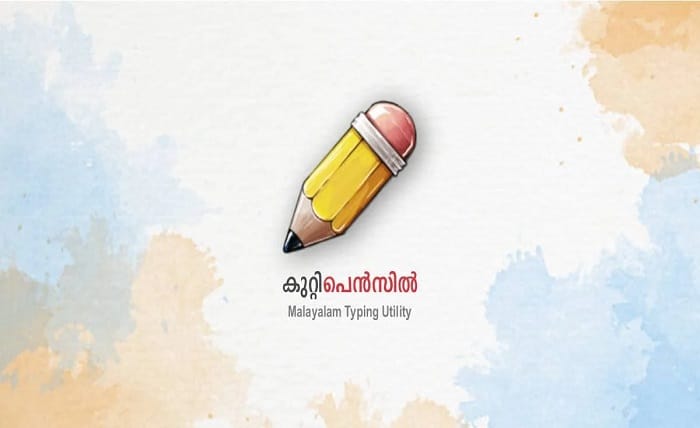In recent years, Kuttipencil Manglish has emerged as a fascinating linguistic trend that combines elements of Malayalam and English in unique ways. Popular among social media users, content creators, and casual communicators, Kuttipencil Manglish allows speakers to effortlessly switch between two languages, often adding humor, creativity, and cultural references. Whether you’re a native Malayalam speaker or someone curious about language trends, understanding Kuttipencil Manglish offers insight into the evolving dynamics of bilingual communication. This blog will explore the essence of Kuttipencil Manglish, its cultural roots, and how it’s becoming a popular mode of expression.
What is Kuttipencil Manglish?
At its core, Kuttipencil Manglish is a playful combination of Malayalam and English, used predominantly in informal communication. The term “Manglish” itself refers to a colloquial mixture of Malayalam and English, while “Kuttipencil” is a popular digital content brand that has embraced and popularized this unique language style. Through memes, videos, and other forms of online content, Kuttipencil Manglish has captured the attention of both younger and older audiences. It allows for seamless transitions between English and Malayalam, reflecting the bilingual nature of many Malayalis. This form of communication has become more than just a trend—it’s a representation of cultural identity and linguistic versatility.
Find the perfect gift for her that shows your appreciation, love, and thoughtfulness, whether it’s elegant jewelry, cozy essentials, or personalized keepsakes.”
The Origins of Kuttipencil Manglish
To fully appreciate Kuttipencil Manglish, it’s essential to understand its origins. The concept of mixing English and Malayalam in speech is not new. For decades, Malayalam speakers have informally blended English phrases into their conversations, a reflection of the colonial influence and the globalized nature of the modern world. However, Kuttipencil Manglish as a distinct cultural trend gained momentum with the rise of social media and digital content creation. Platforms like Instagram, YouTube, and Facebook have played a significant role in promoting Kuttipencil Manglish, with content creators like Kuttipencil leading the charge by popularizing this creative blend of languages through humorous and relatable content.
The Appeal of Kuttipencil Manglish to the Younger Generation
One of the main reasons for the growing popularity of Kuttipencil Manglish is its strong appeal to the younger generation. Young Malayalis, both in India and abroad, find Kuttipencil Manglish to be a convenient and fun way to communicate. It reflects their bilingual upbringing and the influence of English in their academic and social lives. The casual, humorous tone of Kuttipencil Manglish resonates with young people, making it the perfect medium for sharing memes, jokes, and trending topics. Moreover, Kuttipencil Manglish allows for the expression of complex thoughts using a mix of languages, which can sometimes better capture the nuance of modern life.
Kuttipencil Manglish in Digital Content Creation
Kuttipencil Manglish has become a favorite tool for digital content creators who seek to engage their audience with a relatable and entertaining language style. From meme-makers to vloggers, creators use Kuttipencil Manglish to convey humor, sarcasm, and wit. The rise of Kuttipencil Manglish in content creation is also a testament to how language can be adapted to suit the fast-paced, visual-heavy nature of social media platforms. Through short captions, clever punchlines, and video scripts, Kuttipencil Manglish enhances the digital storytelling experience. Kuttipencil, as a brand, has taken full advantage of this by creating a niche in the digital space where Manglish is celebrated and embraced.
How Kuttipencil Manglish Represents Modern Kerala Culture
Kuttipencil Manglish is more than just a language trend—it’s a reflection of the cultural evolution in Kerala. In modern Kerala, where English-medium education is widespread and access to global media is extensive, the use of English has naturally seeped into everyday Malayalam conversations. Kuttipencil Manglish captures this reality, where both languages coexist harmoniously. It also represents the fast-paced, technology-driven culture of young Malayalis who are not only rooted in their traditions but also open to the globalized world. By using Kuttipencil Manglish, they can express both their local identity and their cosmopolitan outlook.
The Role of Social Media in Spreading Kuttipencil Manglish
Social media has played a pivotal role in the rise of Kuttipencil Manglish. Platforms like Instagram, Twitter, and TikTok have become hubs for Kuttipencil Manglish content, enabling it to spread quickly among users. Hashtags, viral memes, and shareable posts featuring Kuttipencil Manglish have amplified its presence online. With the power of social media, this blend of Malayalam and English has transcended geographical boundaries, reaching Malayali communities worldwide. The interactive nature of these platforms allows users to engage with Kuttipencil Manglish content, creating a sense of community among those who appreciate and relate to this bilingual form of communication.
The Evolution of Kuttipencil Manglish Over Time
While the basic concept of Kuttipencil Manglish remains the same—blending Malayalam and English—the language style has evolved over time. In earlier days, Manglish was often used sparingly, with only a few English phrases sprinkled into conversations. However, as digital content creation and social media use expanded, Kuttipencil Manglish became more creative and elaborate. Content creators began experimenting with the language, crafting puns, wordplay, and even new slang that resonated with a tech-savvy audience. The evolution of Kuttipencil Manglish demonstrates the flexibility and adaptability of language as it moves with changing cultural and technological landscapes.
The Humor and Creativity Behind Kuttipencil Manglish
One of the defining characteristics of Kuttipencil Manglish is its humor and creativity. Kuttipencil Manglish often plays on the quirks of both Malayalam and English, using the differences in grammar, pronunciation, and idiomatic expressions to create witty content. Memes, in particular, thrive on this juxtaposition of languages, often using a familiar Malayalam phrase with a twist of English to add humor. This playful use of language makes Kuttipencil Manglish content highly engaging and shareable, contributing to its widespread popularity. Whether it’s a clever caption or a hilarious meme, Kuttipencil Manglish adds a layer of creativity that keeps audiences coming back for more.
The Future of Kuttipencil Manglish
Looking ahead, the future of Kuttipencil Manglish appears bright. As digital platforms continue to grow and evolve, so too will the use of Kuttipencil Manglish in online communication. With more content creators adopting this language style and its relevance to the youth, Kuttipencil Manglish is likely to expand its influence beyond Kerala and even gain recognition among non-Malayali audiences. Moreover, the rise of regional content in India’s digital landscape suggests that Kuttipencil Manglish will remain an important tool for creators looking to connect with a culturally specific yet globally aware audience. The future holds endless possibilities for Kuttipencil Manglish as it adapts to new trends and platforms.
Why Kuttipencil Manglish Matters in Today’s World
In today’s globalized world, Kuttipencil Manglish matters because it bridges cultures, languages, and generations. It is a reflection of how language evolves with time, adapting to the needs and preferences of its speakers. For many Malayalis, Kuttipencil Manglish represents a balance between tradition and modernity—honoring their cultural heritage while embracing global influences. Moreover, it’s a powerful reminder of how digital spaces can shape and redefine the way we communicate. As Kuttipencil Manglish continues to grow in popularity, it highlights the importance of language as a living, dynamic force that reflects the complexities of identity, culture, and connection in the digital age.
Conclusion
Kuttipencil Manglish is a linguistic and cultural phenomenon that reflects the evolving nature of communication in the modern world. With its blend of Malayalam and English, Kuttipencil Manglish captures the essence of bilingualism, humor, and creativity that resonates with today’s tech-savvy, globally connected youth. From its roots in informal conversations to its rise as a popular mode of expression in digital content, Kuttipencil Manglish represents a dynamic and adaptable language style that will likely continue to grow and evolve. Whether you’re a native speaker or a curious observer, Kuttipencil Manglish offers a fascinating glimpse into the way language, culture, and technology intersect in today’s world.
FAQs
1. What is Kuttipencil Manglish?
Kuttipencil Manglish is a combination of Malayalam and English, used in informal communication and digital content creation. It reflects the bilingual nature of many Malayalis and is popular on social media for its humorous and creative use of language.
2. Why is Kuttipencil Manglish popular among the youth?
Kuttipencil Manglish appeals to the younger generation because it reflects their bilingual upbringing and allows them to express themselves in a fun and relatable way. It’s a convenient language style for memes, jokes, and social media content.
3. How does Kuttipencil Manglish represent modern Kerala culture?
Kuttipencil Manglish represents modern Kerala culture by blending traditional Malayalam with global influences like English. It reflects the cosmopolitan nature of young Malayalis who are both rooted in their cultural identity and connected to the world.





